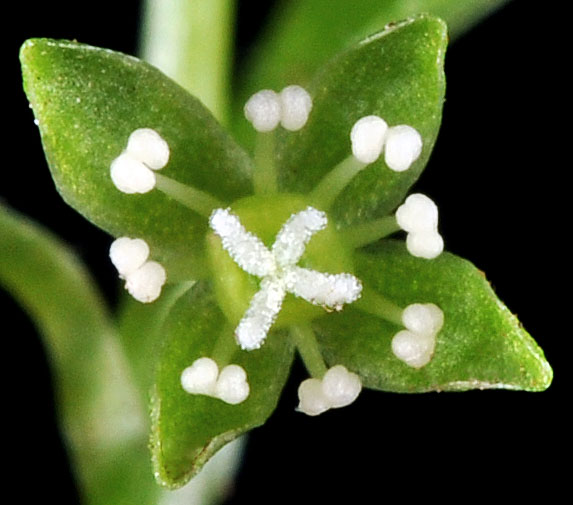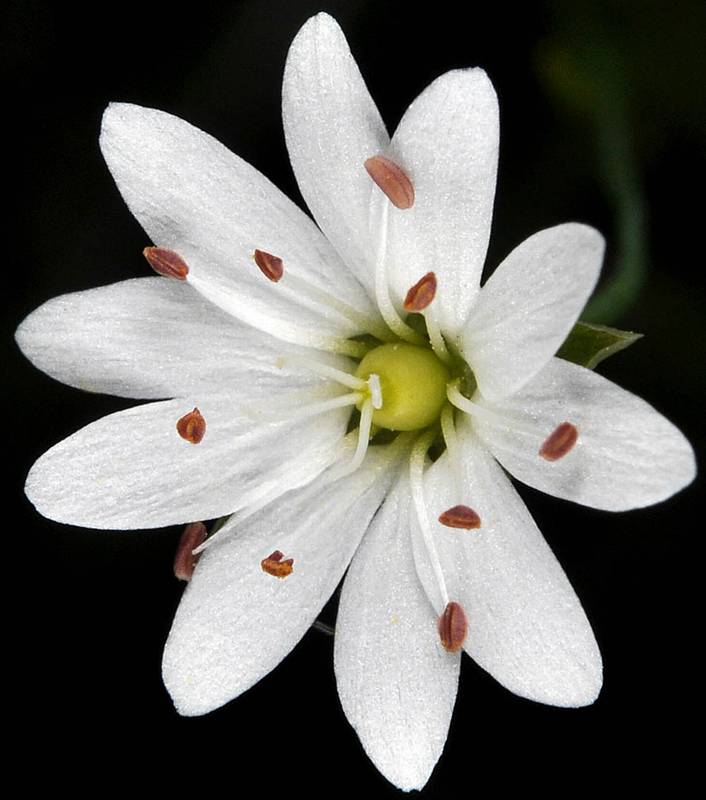Stellaria obtusa
Stellaria longipes
blunt-sepaled starwort
longstalk starwort
Leaves opposite, sessile, stiff, glaucous, 1-3 cm. long and 1-3 mm. broad, linear to linear-lanceolate, usually glabrous.
Flowers single to several in an open inflorescence, the pedicels erect, slender, up to 8 cm. long;
sepals 5, lanceolate, scarious-margined, about 4 mm. long, glabrous, 3-nerved;
petals 5, white, slightly longer than the sepals.
Capsule ovoid, purplish, somewhat longer than the calyx.
Stellaria obtusa
Stellaria longipes
Occurring on both sides of the Cascades in Washington; British Columbia to California, east to the Rocky Mountains.
Occurring on both sides of the Cascades crest in Washington; Alaska to California, east across Canada and the northern Great Plains to eastern North America.
- Local floras:
BC,
CA,
OR,
WA
- Local Web sites:
CalFlora,
CalPhotos,
Flora NW,
PNW Herbaria
WildflowerSearch
iNaturalist (observations)
USDA Plants Database
- LBJ Wildflower Center
- SEINet
- Plants of the World Online
- Encyclopedia of Life
- Wikipedia
- Google Image Search



